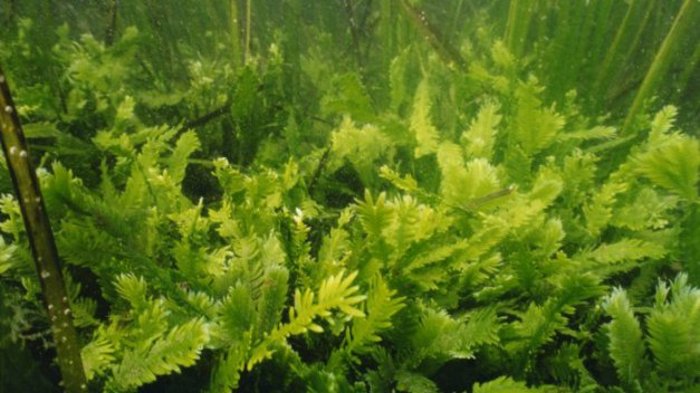Aquarium caulerpa


Aquarium caulerpa
Notify council
What does it look like?
Aquarium Caulerpa (Caulerpa taxifolia) is an algae that is normally found in aquariums. It is a bright green seaweed with horizontal runners that give rise to many upright fronds. These fronds have smooth and distinct mid rib, reaching up to 1cm wide and up to 15cm tall. Pinnules (individual leaves) attach to mid-rib directly opposite one another.
Aquarium Caulerpa can form dense meadows in waters from 1m to 35m deep and grow on a range of surfaces including rocky, muddy or sandy substrates and man-made structures, such as wharves, jetties, ropes and buoys.
You must notify the Northland Regional Council or the Ministry for Primary Industries if you suspect the presence of this organism.
If you think you've found any species of Caulerpa
- photograph it
- note the location and any landmarks
- call 0800 80 99 66
Why is it a problem?
Aquarium Caulerpa can quickly spread and smother other algae, seagrasses and invertebrate communities, thereby out-competing native species for food and light and reducing nursery habitat for fish. This species of Caulerpa also produces toxic compounds that are detrimental to other marine species. Although some fish species can still eat Caulerpa safely, the toxin stays in their flesh and humans can be made sick if they eat fish with Caulerpa toxin.
Note: The Exotic Caulerpa (Caulerpa brachypus and Caulerpa parvifoila) present in New Zealand are not known to contain this toxin and do not create any food safety issue with consuming fish.
Control methods
You can help prevent the spread of marine pests by:
- Regularly cleaning your boat’s hull – ideally keep fouling growth to no more than a light slime layer.
- Applying a thorough coating of antifouling paint and keep it in good condition.
- Ensure your hull is clean and free of fouling before you travel to a new area.
- Clean and dry any marine equipment (e.g. ropes, lines, anchors and pots) before using in a new area.
- Inspect areas on your boat that retain water for signs of marine life (e.g. sea chest, bait tanks, anchor/bow locker).
- Check for aquatic weeds tangled around anchors, trailers and other equipment.
Status
This pest is not currently found in New Zealand.
Related information
Management programme
Notifiable organisms
Unwanted organisms
Rules
More images


